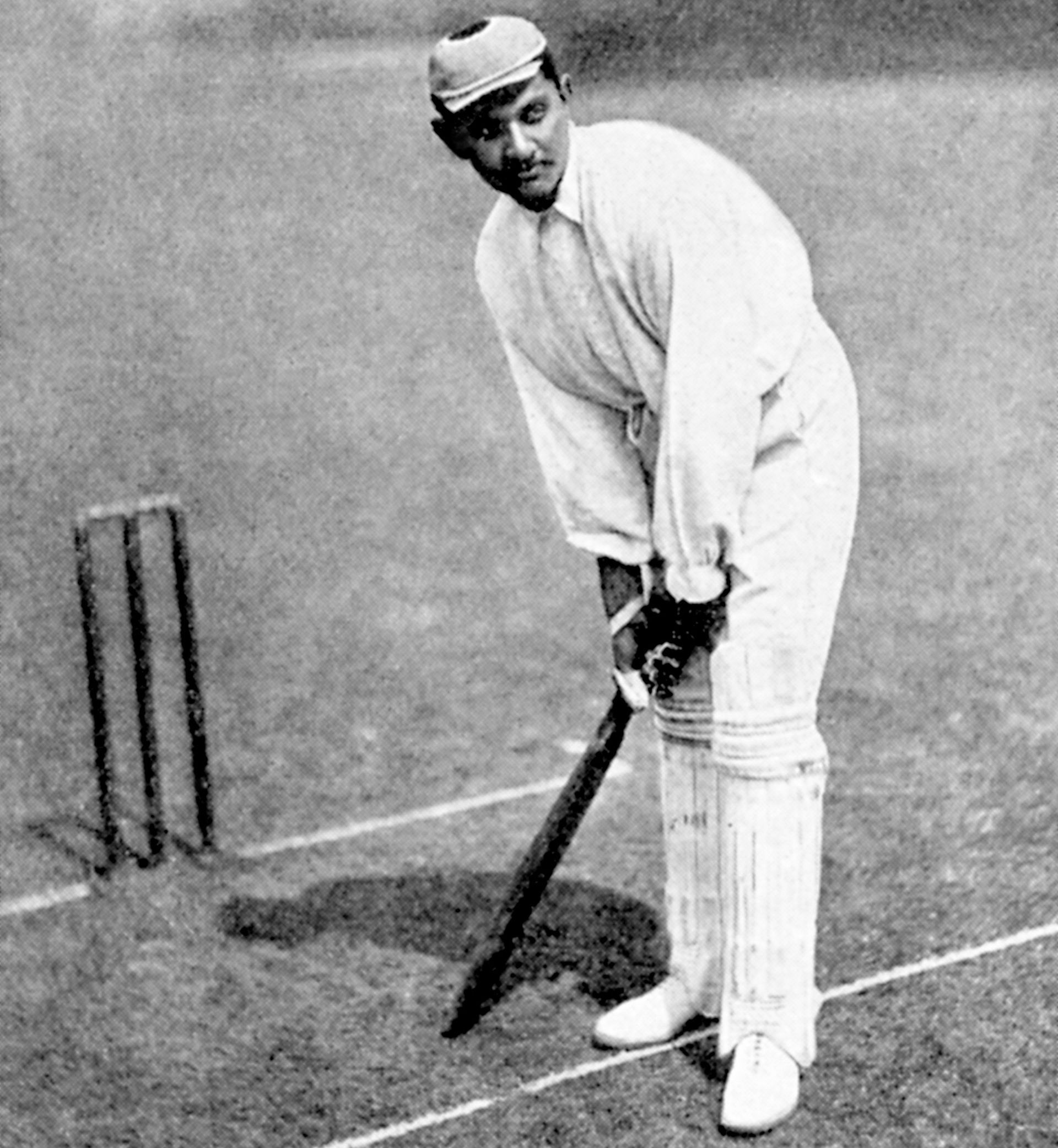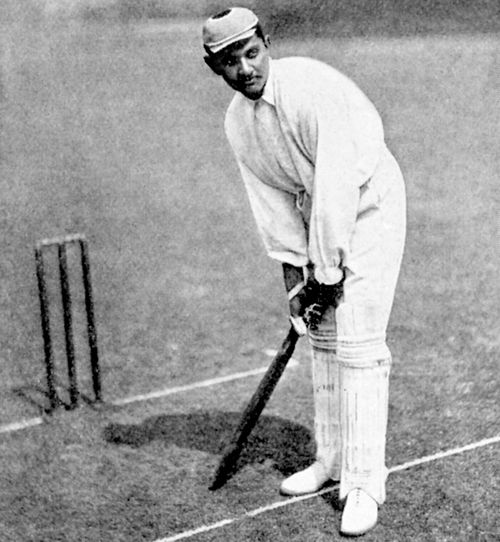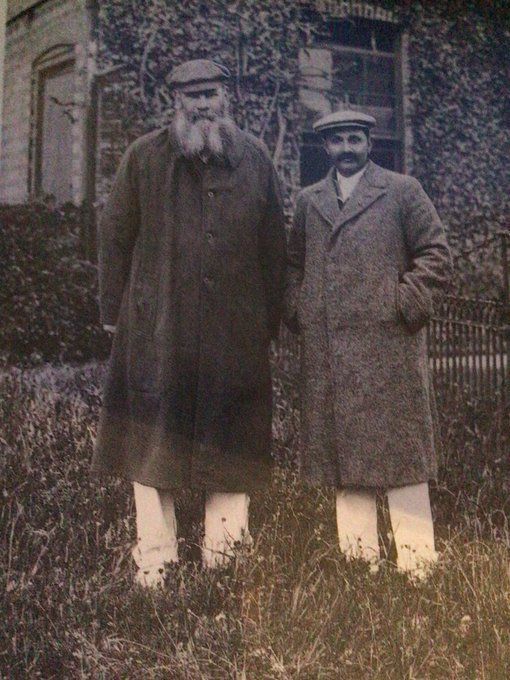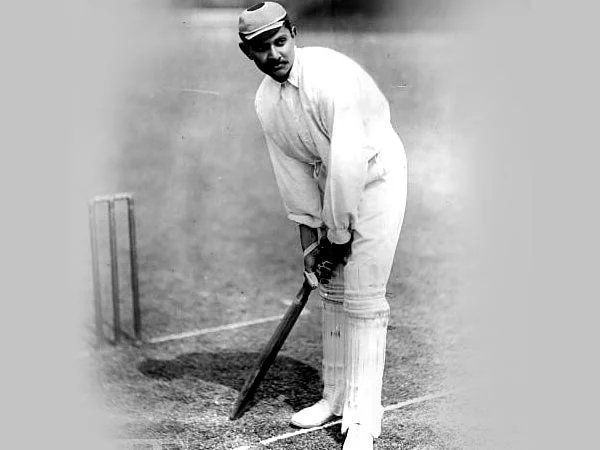
K.S. Ranjitsinhji’s charm transcended all the elegant runs that he made

K.S. Ranjitsinhji, better known as Ranji, worked hard to hone his talent by hiring professional bowlers from Surrey while he was at Cambridge.
Simon Wilde wrote in his biography Ranji A Genius Rich and Strange:
“He practised with as much purpose whether he had just been out for 100 or for 0. He was a severe critic of his own game, and if he was indeed a genius it was for his infinite capacity for taking pains, not for becoming a superlative cricketer overnight. He enjoyed theorizing about the game and putting those theories into practice.”
The outcome was a batting style that was as unique as it was novel, and it perplexed the English. Cardus elucidated in Good Days (1934):
“In the nineties the game was absolutely English; it was even Victorian. W.G. Grace for years had stamped on cricket the English mark and the mark of the period. It was the age of simple first principles, of the stout respectability of the straight bat and the good-length balls.”
Cardus continued:
“And then suddenly this visitation of dusky, supple legerdemain happened; a man was seen playing cricket as nobody in England could possibly have played it. The honest length ball was not met by the honest straight bat, but there was a flick of the wrist, and lo! The straight ball was charmed away to the leg-boundary. And nobody quite saw or understood how it all happened.”
Those who saw Ranji bat vouched that he had an exceptionally quick eye and could hook the fastest bowlers with ease. Although he had appeared in English first-class cricket since 1893, Ranji's first full season was in 1895 when he made his debut for Sussex against the MCC. He caused an immediate impact, carving out scores of 77 and 150. From then on, he captured the imagination of the public and became a very popular, even mystical, figure.
The next year at the age of 23, Ranji topped the first-class averages at 57.92, surpassing W.G. Grace’s record season aggregate by scoring 2780 runs and equalling the great’s 10 hundreds. In a unique feat, Ranji hit up a century in each innings of a match on the same day. Resuming at zero not out, he notched up 100 and 125 not out for Sussex against Yorkshire at Hove.
Ranjitsinhji became the second batter after W.G. Grace to score a century on Test debut
The English were reluctant to pick him in their Test side, but his huge popularity ensured that he was selected for the second match. Appropriately, Ranji became the second England batter after Grace to score a hundred on Test debut, an unbeaten 154 against Australia, having hit 62 in the first innings. In the process, he nearly pulled off an improbable win.
In the 1897 season, Ranji scored 1940 runs at an average of 45.12. He hit up his first double-century - 260 in just 250 minutes - with the aid of 36 fours and a six against MCC at Lord’s, the highest by a Sussex batter.
Ranji never took the tedious sea journeys well. Prone to attacks of asthma, he was taken ill during a month-long voyage to Australia in 1897-98. He was still unwell when the first Test began in Sydney. Even so, he battled through, carving out a monumental 175, which was a record for England until R.E. Foster bettered it with 287 six years later. Ranji’s knock enabled England to win their only Test in a series they lost 1-4.
It was a productive tour for him as he averaged over 50 in Tests and over 60 in first-class matches. In all, he collected 1157 runs. At the end of the tour, Ranji returned to his homeland after a decade.
Having missed the English season of 1898 as a result of a long sojourn at home, Ranji’s best came at the turn of the century, even though he was not quite as slim and his feet didn't seem as nimble.
In 1899 he became the first to score 3000 runs in a season. He bailed out England in the first Test at Nottingham, scoring 42 and 93 not out, and holding Australia to a draw. By the end of the series, he had scored 970 runs in 12 Tests at a brilliant average of 53.88. He amassed 3159 first-class runs at 63.18 per innings.
Ranji’s 1900 season was just as brilliant. So irresistible was his form that he knocked up successive double centuries, both for Sussex - 222 against Somerset -and an unbeaten 215 versus Cambridge University. Quite the master on rain-affected wickets, he breezed to 202 in three hours off Middlesex bowling after a thunderstorm at Hove, with the next highest by a Sussex colleague being 17.
His five double centuries were a record for a season, bettered only by Sir Donald Bradman with six in 1930. Everton Weekes of the West Indies equalled Ranji’s five double tons exactly half a century later. The now-unstoppable Ranji logged 3000 runs for the second successive season, this time scoring 3065 runs and topping the averages at a mind-boggling 87.57, hitting up 11 hundreds.
1901 was yet another splendid season. Ranji again scored two double centuries in a row, once more representing his county, an unbeaten 285 against Somerset and 204 at the expense of Lancashire. The first was an amazing feat, not only for the fact that it was his top score and the highest-ever by a Sussex batter, but because he was out fishing the entire previous night!
For the 1901 season his tally was 2468 runs at 70.51 per innings. In three consecutive seasons, Ranjitsinhji had totalled 8692 runs at an average of 72.43 with 27 hundreds. The "wizard from the orient" continued to enchant and befuddle at the same time.
He did not sail to Australia in 1901-02 and, perhaps due to the troubles in his personal life, lost form dramatically in the Tests in 1902, managing just 19 runs in four innings and never playing at that level again.
He still finished with a Test average of 44.96, a splendid achievement at the time. In first-class matches, though, Ranji continued to blaze away until 1904 when he again topped the 2000-run mark - 2077 runs at an average of 74.17.
Succession issues in Nawanagar and after
Succession issues in Nawanagar kept Ranjitsinhji back in India, and he missed the next three seasons. He returned to England in 1908, having been installed as ruler of the 3791 square mile princely state in circumstances full of intrigue and danger. He played that season as well in 1912, remarkably notching up 1000 runs each time.
Ranji was last seen on the cricket field in 1920. Astonishingly, he played three first-class matches and, as was only to be expected, failed miserably. The fact was that his right eye had been removed five years earlier when he was met with an accident while shooting grouse. This was soon after he returned from France, ending a brief and miserable stint in the army during the First World War.
It was while Ranji was recuperating, eye still bandaged, that he traveled to Beckenham, Kent, on October 26, 1915 to attend the funeral of his former England captain W.G. Grace. The curtain came down not just on one era, but for all practical purposes, two.
Ranji’s first-class average of 56.37 was the highest for a full career by an England-based player until as late as 1986 when Geoff Boycott retired with a fractionally higher average of 56.84. If one considers that Ranji’s career was all but over in 1904, his appearances thereafter were sporadic in 1908 and 1912, and farcical in 1920, his deeds are even more astounding.
Up until 1904, Ranji scored 22,402 runs at an average of 58.49 with 65 hundreds in 267 matches in less than a decade. A true reflection of his genius.
To the outside world, Ranji was an exceptionally gifted prince who toiled diligently in the nets to emerge as the finest batter of his era. Yet not many realized the inner turmoil that he undoubtedly underwent during his best years at the wicket, what with the drama of his adoption that never was, the machinations over his succession as a ruler and his financial woes at the time.
He was laid low due to illness for long periods. One has to marvel at the fact that he excelled in the game under these trying circumstances. Or, more likely, he used them as a spur to motivate himself and to prove to those who mattered that he was fit to be king.
Yet his charm transcended all the elegant runs that he made. As Jessop wrote:
“From the moment he stepped out of the pavilion he drew all eyes and held them. No one who saw him bat will ever forget it. He drew the crowds wherever he went, and at the height of his cricket days the shops in Brighton would empty if he passed along the street. Everyone wanted to see him.”
Ranjitsinhji had transformed batting forever. As late as 1944, Pelham Warner wrote:
“With his wonderful eye and wrists, he could play back to almost any ball, however good a length, and however fast. Like Bradman, he seldom played a genuine forward stroke, for, again like Bradman he found that balls to which he could not play back he could, with his quickness of foot, get to and drive.”
This "play back or drive" method, however, can only be used by someone with a sharp eye and quicksilver footwork, like Ranji or Bradman. The English batters attempted to copy it with disastrous results. It takes someone extraordinary to play in an extraordinary way. Ranji scored more profusely than anyone had done before, just as Bradman was to do three decades later.
(Excerpt from Indra Vikram Singh's book 'Don's Century').

